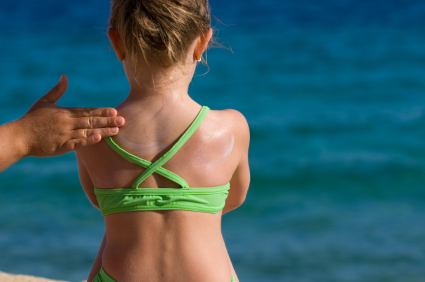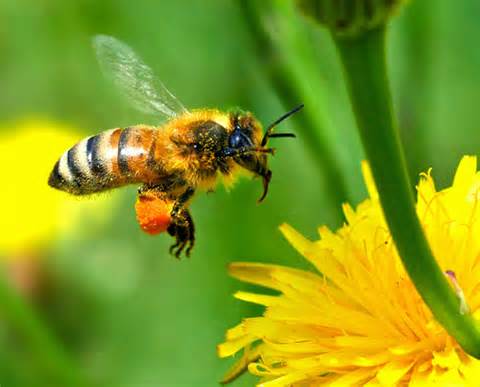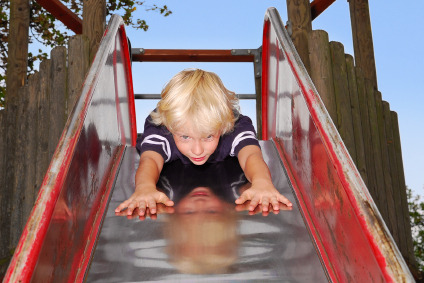
It’s summertime — time to enjoy the outdoors — all the time! And so much playing outside is great, but it’s also a little more rough-and-tumble than indoor play.
To help you navigate the bumps, bugs, blisters and burns of summer, we’ve put together this guide to common ouchies and injuries and what to do when they happen.
Here are some conventional remedies — and some unconventional ones — to soothe summer suffering so your family can get back to the fun as soon as possible!
Sunburn
When sunburn strikes, take the sting out of it by taking a cool shower or bath. Use aloe vera or moisturizing lotion several times a day, and leave blisters alone to prevent infection. If they do burst, apply an antibacterial ointment like Neosporin.
Try this home remedy, passed along by an old Greek fisherman: Apply plain yogurt to the sunburn, spread it so that you can see through it, leave it on as long as it cools the sunburn and then wash it off with cool water. Or try using potatoes: Liquefy clean potatoes and spread on your skin, then wash off in a cool shower when they dry.
Insect bites
Most mosquito or insect bites leave behind a red bump or large hive — nothing to worry about. But severe allergic reactions include difficulty breathing, swallowing, hoarseness or sudden cough, slurred speech, confusion, or difficulty waking. Get help immediately for any of these symptoms.
For routine reactions, try a 1% percent hydrocortisone cream four times a day, or use a baking soda paste on the bite. If you don’t have those, ice the bite for 20 minutes. Also, use a hard object — fingernail, pen cap — to apply firm pressure for 10 seconds to reduce the itch. Taking Benadryl can help with the itch also.
For a natural remedy, apply apple cider vinegar to a bite for quick relief. Or use lemon or lime juice or slices on the bite a few times. Rubbing the inside of a banana peel can help too.
 Bee stings
Bee stings
First things first, remove the stinger. Immediately scrape it out with a credit card or fingernail and don’t squeeze it — that will release more venom. Wash with soap and water and use cold compresses for pain and swelling. If the reaction to the bee sting spreads to the skin around the sting, apply hydrocortisone cream or calamine lotion and take an antihistamine like Benadryl.
If the child has an allergic reaction — hives or flushed or pale skin, difficulty breathing, throat closing, tongue swelling, nausea, vomiting or diarrhea, dizziness or fainting — call 911 and check for medications (such as an EpiPen or Twinject) and get him to the hospital. If there are multiple stings, get medical care right away.
You can also try one of these home remedies from vegetablegardener.com. Crush a clove of garlic and press it on the sting; put a drop of lavender essential oil on the sting; or mix baking soda and water into a paste and apply it to the sting site. It works on bee stings and spider bites too. Remember “Baking Soda: Bug Stuff.”
Spider bites
Wash spider bites with soap and water, apply a cold compress, elevate the area if possible, and give Tylenol or and antihistamines to relieve pain, itching and swelling.
Not all spider bites are harmless. Check this resource for a state-by-state guide to venomous spiders, or check your state's natural resources department. Grandma’s Home Remedies recommends good old baking soda for ordinary spider bites and other insect bites. Mix three parts baking soda with one part water and apply the paste to the spider bite. Baking soda will work to draw out the toxins from the bite.

Poison ivy
First wash the area and cut your child’s fingernails so she doesn’t break the blisters while scratching. Then use refrigerated one-percent hydrocortisone cream four times a day — the cold will provide more relief for your child.
To relieve some of the itching and oozing, soak the rash in cool water or rub with an ice cube. Benadryl every six hours can also help with the itching. If your child’s rash gets bigger, it means she’s been in contact with more oil from the plants. Reevaluate what she might have touched — clothing, shoes, the dog, etc. — use gloves to touch them and wash, wash, wash! The rash itself isn’t contagious so there’s no risk to other children.
If you can catch it soon after exposure, apply rubbing alcohol to the affected area. It can prevent the poison ivy oils from penetrating the skin. Once the rash has emerged; try applying apple cider vinegar to the affected area. Try soaking a brown paper bag in the vinegar and apply it to the rash to remove the toxins.
Cuts, scrapes and puncture wounds
Most cuts and scrapes will stop bleeding on their own, the Mayo Clinic says, but if they don’t, apply pressure with a clean cloth. Refrain from checking to see if the bleeding’s stopped. Next, clean the wound with water only. If rinsing doesn’t get all the dirt or debris out of the wound, use a tweezers, cleaned with alcohol, to remove the particles. Next, apply an antibiotic ointment like Neosporin. Bandage the wound.
If a wound is more than ¼-inch deep or it’s jagged or gaping or you see fat or muscle, get medical attention immediately — it may need stitches. Follow the same steps for puncture wounds but see your doctor if the wound is deep, in a foot, has soil or saliva in it, or came from an animal (or human) bite.
You can also apply honey to the cleaned wound, according to Discovery Health. It dehydrates the bacteria in a wound, cleaning it and protecting it from infection. Put it on a gauze pad to apply.
Burns
When your kid gets too close to the citronella candle, or burns himself toasting a marshmallow, follow these steps. First, hold the burn under cool running water or soak it in cool (not ice) water for at least five minutes. Then put a bandage over the burn. Taking ibuprofen or acetaminophen can help with the pain.
You can also try some common home remedies for burns. Apply honey to a gauze bandage and cover the wound — the honey will attract water and bacteria and help clean the wound. Milk will soothe the pain of a burn. Soak a clean cloth in milk and hold it on the burn for 15 minutes every few hours, rinsing the cloth in between applications.
 Dehydration
Dehydration
First of all, prevent dehydration by drinking plenty of fluids during hot weather or being active. Infants and children are especially prone to dehydration because they’re small and they process water and electrolytes more quickly than adults. If your child has a dry mouth, is sluggish, not urinating for hours, or produces few or no tears when he cries, it’s likely he’s dehydrated. Give him water or electrolyte drinks (like Pedialyte — but consult your doctor if your child is under 1). If he’s extremely thirsty, fussy or very sleepy, not sweating or producing small amounts of dark urine, he’s severely dehydrated — get him to a doctor.
Add a boost to the kids’ fluids by giving them fruits and vegetables full of water like watermelon and cucumbers. Eating bananas, yogurt or cottage cheese helps to replace electrolytes. Ice pops are also a great way to get more water into your kids.
Splinters or slivers
If tiny splinter(s) don’t hurt, you can leave them in. They’ll work their way out eventually.
For painful plant stickers or tiny slivers, (or if your kid won’t let you near her with the tweezers) try this: lightly touch them with very sticky tape (packing tape, duct tape) and remove the slivers. If that doesn’t work, try wax hair remover. Apply a layer and let it dry, then peel off and most slivers will come out. If other tiny slivers are left, they’ll work themselves out.
For larger slivers, remove with sterile tweezers (clean with rubbing alcohol); cleanse the surrounding area with alcohol or soap and water. Expose the end of the sliver with a needle and then pull it out with tweezers at the same angle it went in. If a sliver is under the fingernail, you may have to cut the nail to get the sliver out. If the end of a sliver breaks, open the skin up with the needle and flick it out.
Grandma’s Home Remedies suggests pouring hydrogen peroxide over the area to coax the splinter outside of the skin — the bubbles will lift it out.
 Sprains
Sprains
Most minor sprains can be treated at home. Remember R.I.C.E. Rest the affected limb for two days. Ice the sprain as soon as possible — 20 minutes on, 20 minutes off, up to eight times a day. Compress it with a bandage or elastic wrap, and Elevate it above the heart if possible to slow swelling.
You can take over-the-counter pain relievers for the pain. If it’s not improving in two or three days, see your doctor.
For natural remedies try arnica cream. Bastyr University suggests a comfrey cream as a natural remedy for sprains to reduce pain and inflammation and stimulate healing.
Sources: Mayo Clinic; Seattle Children's Hospital; Grandma's Home Remedies; Discovery Health; Bastyr University; Reader's Digest; vegetablegardener.com; National Institutes of Health
Maria Bellos Fisher is a freelance writer, blogger and mom. Her family-relationships blog, Hereditary Insanity, is available at mariabellosfisher.com/blog.











